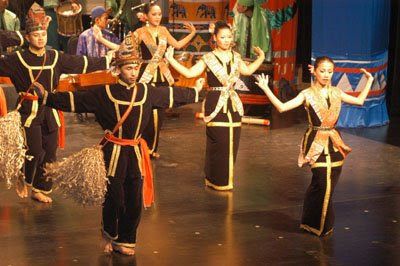WE ALL know of various Chinese communities that have lived in Malaysia. But how many have heard of the Hui – a Muslim culture from China which was one of the earliest Chinese to migrate to Southeast Asia?
Until a few years back, remnants of the community still lived in a jetty in Jelutong, Penang. Called the Koay Jetty, it was
the only remaining settlement of the Chinese Muslim race in Peninsular Malaysia, which had exerted some degree of influence in the region since 700 years ago.
Today, at the very site where the jetty – which was controversially demolished and its residents evicted – once existed stands a mammoth multi-storey block of flats in front of a noisy expressway that has since also sprung up there.
For those who still remember the rather idyllic wooden jetty, the gigantic concrete block that lies in its place must lend a strange feeling of disparateness, presenting itself with jarring contrast to the memory of the area as it was before.
The jetty got its name from one of the Hui’s biggest seafaring clans called the Koay. Many of them were merchants or coolies when they came to Penang in the late 19th century. They shared the same language and social traits as most other Chinese immigrants from Fujian province. The only difference was their religion.
I met some of the Hui residents before the jetty was bulldozed. Among them was former charcoal dealer Koay Ah Bee, in his seventies. He still observed customs such as death ceremonies peculiar to the Hui, though he readily admitted many youngsters in the present generation did not know why the rituals were followed. Some solemn observances however were complied with during ceremonial occasions; these included strict consumption of halal food.
Interestingly enough, the great Ming dynasty admiral Zheng He, also known by his Muslim name Ma Ho, was a Hui, and his support was crucial to the stability of the Malacca sultanate.
According to research by local historian Dr Ong Seng Huat, the Hui people were instrumental in helping to sustain the Malacca sultanate and empire in the 15th century. Ong’s studies have shown that Zheng He brought along many influential Muslims to Malacca. These included religious teachers from Siam and China, an imam named Hassan from the mosque in Xian, as well as an Indian Muslim named Sha Ban who lived in China.
Very notably, one of Zheng He’s secretaries, Koay Chong Li, originated from the same area – Baiqi village in Fujian province – that Penang’s Koay clan traces its roots. Besides Malacca, the Hui built numerous other settlements in the region. Until the Second World War, there was a sizeable settlement in Singapore, and a few in Pangkor island and Sitiawan.
Understandably, many of the rituals and customs of the Hui have been lost. The people themselves have gradually over generations forgotten their original identity, and some have assimilated into Malay society. Others have been similarly absorbed into mainstream Chinese culture. There are Hui people are also known to have settled in Sabah, merging with other communities there.
“Many Malaysian Chinese,” Ong told me, “do not even know that they are Hui.” But those at the Koay jetty were somewhat different – they could trace their genealogy back to about 17 to 22 generations.
About 40 years ago, Ibrahim T.Y. Ma, a prominent Chinese Muslim leader, lobbied hard to then prime minister Tunku Abdul Rahman for an end to government intentions to demolish the seemingly irrelevant urban jetty. He succeeded and plans to tear down the wooden Koay Jetty were halted.
Authorities in more recent times however were not so sympathetic towards the plea of heritage and community, causing the settlement to be destroyed for a high-density development project.
The removal of the jetty signified a sad disappearance of a unique portion of our history. But the lost community of the Hui can still be remembered as one of the little-known sub-cultures that have over the centuries contributed to the great social potpourri of our country to what it is today.


